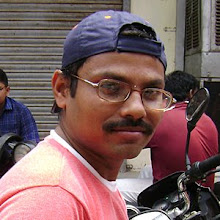Maithili, an Eastern Indic language, is spoken in Mithila. Maithili has previously been considered a dialect of both Hindi and Bengali. Today Maithili, is recognized in the Eighth Schedule of Indian official languages. In southern districts of Mithila Angika is spoken.
The Mithila region is rich with culture and traditions, including the worship of the goddess of power, Durga. Every home of Mithila has its own god or goddess known as a kuldevta. The people generally live in larger families. The Hindu festivals are widely celebrated : Makar Sankranti (14 January), Basant Panchami, Saraswati Puja, Shivratri.Holi, Ram Navami, New Year(Mesha Sankranti on 14 April usually, Janaki Navami(Baishakh Shukla 9), Batsavitri, Madhushravani, Nagpanchami, Rakshabandhan,Krishna Janmashtami,Chauth Chandra, Durga Puja, Kojagara(Sharad Purnima), Diwali, Bhatridwitiya, Chhathi, Akshya Navami, Devotthan Ekadashi, Sama Chakeba,Kartik Purnima, Vivaha Panchami,etc. in which some are specific in Mithila such as Chauth Chandra when Ganesh Chaturthi in Bhadrapad is celebrated rest of India, and Indra Puja in Ashwin Krishna Paksha and So Bhatridwitiya and Sama Chakeba in Kartik Shuklapaksha-are festivals for brothers and sisters apart from Rakhabandhan as in other parts of Indian subcontinent.
A Mundan ceremony in Mithila.
The Mundan ceremony is a very popular tradition in Mithila. A child's hair is shaved for the first time, accompanied by bhoj (a party) and (sometimes extravagant) celebrations.
The Maithili marriage traditions are important to the people and unique to the region. The custom includes four days of marriage ceremonies called: Barsait,Chautrthi, Madhushravni, Kojagara, and finally Dwiragman (the first homecoming of the bride). The marriage is traditionally fixed using complex genealogical tables, called Panji among Brahmins, Dev-Chaudhary “ Deo and Karna Kayasthas which are maintained by Panjikars, a special group of Brahmins who prevent marriages among relatives up to sixth degree in Matripaksha and seventh in Pitripakksha.
The name Mithila is also used to refer to a style of Hindu art, Madhubani art, created in the Mithila area. This art originated as ritual geometric and symbolic decorations on the walls and floors of a house, generally done by women before a marriage. The custom was not known to many outside the region. After paper was brought to the area, women began to sell their artwork and expand their subjects to popular and local Hindu deities as well as to the depiction of everyday events. Ganga Devi is perhaps the most famous Mithila artist; her work includes traditional ritual Mithila decorations, depictions of popular deities, scenes from the Ramayana, and events in her own life.
Folk stories are called grandmother stories in Mithila. The story of Gonu Jha is one popular tale.
A small film industry also exists. Of the many movies produced in Mailthili, "Sasta Jingi Mahag Senoor" and "Mamta Gabe Geet" are perhaps the best known.Off late " Sindurdan " also collected accolades. Among the documentary films that best presents the unparalleled cultural richness of Mithila are "The Cultural Heritage of Mithila" which showcases Pamaria, Pachania, Bhaant, Panaji-Prabandh, Sama-Chakeva, Salhes naach and Salhes gaatha gaayan, Kamla-Pooja etc. and "Mithila Paintings" which showcases the insights into the past, present and emerging forms of the Mithila paintings.
Friday, 19 August 2011
Subscribe to:
Comments (Atom)
